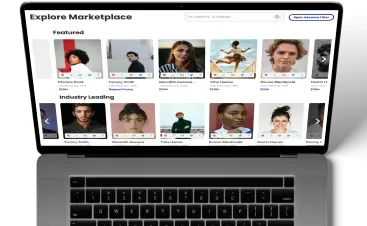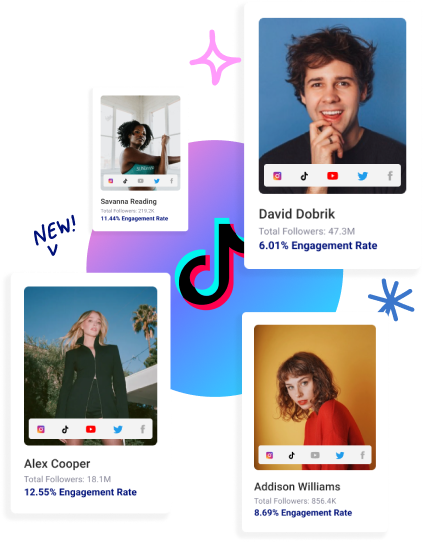The creator economy is still new; just 15 years ago influencers and creators didn’t exist in quite the same way they do today. Sure, there were bloggers and podcasters, but YouTube was still new and Instagram wouldn’t be launched until 2010.
According to researcher Emily Hund, who recently wrote a book about the creator economy, the influencer market as we know it was launched by the Recession of 2008, when young professionals realized they’d have to make their own financial luck rather than looking for a traditional job.
Since then it’s been growing exponentially and there is no sign it will stop anytime soon. Goldman Sachs Research projects that the $250 billion creator economy will double in size by 2027, growing to almost a half billion dollars.
What Is the Creator Economy?
The creator economy describes the more than 50 million people who make money by creating and sharing content online. Although social media influencers might immediately spring to mind, the creator economy encompasses a wide variety of creatives, from writers and artists to videographers and podcasters.
That said, the $21.1 billion influencer market represents a sizable chunk of the creator economy. Creator economy platforms include YouTube, TikTok, Twitch, and Instagram, which allow creators to connect directly with their audiences and earn money through advertising, sponsorships, and other means, such as selling their own products, or starting their own businesses.
For instance, several beauty influencers have partnered with cosmetics brands to release their own lines of makeup and skin care. Another example is Twitch streamer Pokimane, who recently released a line of healthy snacks for gamers.
In general, anyone who makes and sells their creative work online is part of the creator economy and — as we’ve written previously — not all creators are influencers. In fact there can be some confusion about “content creator” meaning, so here’s a quick primer:
What Is a Content Creator?
A content creator is just what it sounds like: anyone who creates content for an audience online. Content creators include digital creators like artists, crafters, writers, and photographers. Influencers are also content creators.
What Is a Digital Creator?
A digital creator is someone who produces online content across various platforms. Creators predate influencers; they are writers, musicians, artists and other creatives. They use the internet to make and distribute their art or products.
What Is an Influencer?
As an influential personality, an influencer is their own product. They create content that showcases their popularity, interests, status, and lifestyle to a devoted online following. They share content that is authentic to their personality and their brand.
How Does the Creator Economy Work?
The creator economy is fueled by a hunger for authenticity among consumers. By connecting directly with their favorite creators, customers feel better able to develop a relationship with those creators. They can also buy directly from creators, sponsor their work, and interact with creators through comments and likes. Many influencers use these interactions to foster a sense of community among their followers.
In many ways, influencers represent a new form of word of mouth — consumers watch their favorite influencers daily, interact with them regularly, and, as a result, come to trust them. That trust comes with the ability to influence their fans’ purchasing decisions. When creators or influencers make a recommendation, their followers listen: 69% of consumers trust influencers as much as family and friends when making a purchase, and 50% of Millennial respondents to a recent survey said they trust their favorite influencers’ product recommendations.
For that reason, brands seeking to market their products have tapped into the influencer market: 82% of companies told researchers they are dedicating part of their budget to influencer marketing this year.
Common Roles within the Creator Economy
It can sometimes be hard to pin down what exactly we mean by “content creator” because the creator economy rarely stands still. New types of creators and influencers spring up regularly, based on consumers’ interests and appetites.
However, there are some standard roles within the creator and influencer sectors, many of which overlap:
- YouTubers: YouTubers create and share videos on YouTube, covering a variety of topics such as vlogs, tutorials, reviews, and entertainment.
- Social media influencers: Influencers can work across a variety of platforms to build a significant following, but generally they tend to prefer one platform, like Instagram, TikTok, or Twitter. Influencers create content that resonates with their audience, usually focusing on one area, like fashion, beauty, gaming, parenting, or another niche.
- Game streamers: Streamers are gamers who broadcast themselves playing video games on platforms like Twitch or YouTube, often accompanied by commentary and interaction with viewers.
- DIY crafters: Crafters are known for tutorials, and may use a variety of platforms to create and share how-tos for various DIY projects. Many use Pinterest along with another platform, like a blog or YouTube.
- Food bloggers/vloggers: Like crafters, online foodies use a combination of platforms to share recipes, cooking tips, and food-related content. Usually they use blogs, videos, and social media platforms.
- Podcasters: Podcasters are audio creators, who create content of themselves discussing various subjects and engaging with listeners.
- Bloggers and writers: Some of the very first creators in the creator economy, writers share written content through blogs or articles on platforms like Medium, Substack, or their personal websites.They may also use social media.
The creator economy is not limited to digital creators, however. Independent creators also use online platforms to sell their art and products. For example:
- Digital artists may create digital art, illustrations, and designs, often shared on platforms like Instagram or sold through platforms like Etsy.
- Photographers may share their photography on platforms like Instagram, licensing images, or selling prints.
- Musicians may create and share music on platforms like Spotify, SoundCloud, or YouTube, and may monetize through streaming, merchandise, and live performances.
- Fitness instructors might use YouTube or other streaming platforms to create classes or workouts.
These roles, however, are always changing as the creator economy grows. You never know what sort of creator may emerge as tastes and interests change.
The Challenge of Managing a Large Number of Content Creators
An increasing number of businesses of all sizes are working with content creators as part of their marketing strategy. A recent survey found that 71% of respondents had increased the amount of content they are producing through influencers. However, an increase in influencer content can bring challenges, especially as a business starts adding content creators to its marketing stable.
- Maintaining quality: Quality control can be difficult when you’re working with a lot of creators. Establishing and enforcing content guidelines helps, but that can seem impossible if you’re working with several creators. This is one of the reasons it’s so important to choose the right creators for your brand. The more closely your brand and culture aligns with your creators, the more likely they are to effectively promote your products, and the less time and effort you’ll have to spend on quality control.
- Finding influencers for your brand: Traditionally, brands would need to look through Instagram, YouTube, TikTok and other social media platforms to find the email of influencers and reach out directly. Now with platforms like Glewee, brands are able to launch a campaign in under 2 minutes and qualified influencers will apply directly in the platform, making influencer marketing for brands easier than ever before.
- Fair compensation: If you’re working with several different kinds of creators with different numbers of followers, you may find that determining fair pay is complex. After all, a micro-influencer with a small but devoted following in a rare niche may not command the pricing of an influencer with a million or more followers. However, both may be valuable to your brand. It’s important to create an equitable pay structure so that all your influencers are fairly paid, however, you may also benefit from working with a platform that can offer guidance on what is considered fair pay for different types of creators.
- Monitoring Performance: When you’re working with a few creators, it’s easy to monitor their performance. Not so much when you’re working with several. Analyzing the performance of individual creators becomes more complex at scale. Using a tool that offers a dashboard, so you can check analytics at a glance will save you from the manual labor of checking everyone’s posts and performance.
- Giving creators the freedom to be flexible: A balance needs to be struck between quality control, moderation, and allowing your content creators the freedom to create sponsored content that’s true to their brand. If you’re trying to hand every creator the same script, that’s likely to backfire. A creator’s followers can spot inauthenticity and will punish it. If consumers feel that their favorite influencers are abusing their trust — if the influencer seems to simply be parroting advertising messages at them, or doesn’t seem to be honest — they won’t respond. Even worse, they may lose trust in the creator. One need look no further than Mascaragate, in which beauty influencer Mikayla Nogueira was accused by followers of wearing false eyelashes in a sponsored review of mascara, to see how influencers and brands can be damaged by even the perception of inauthenticity.
See an example of a post between a direct-to-consumer brand on Glewee and lifestyle Creator KenBunny on Instagram:
Using the Creator Economy to Grow Your Brand with Glewee’s Influencer Marketing Platform
The internet and social media platforms have given creators a way to connect directly with their ideal audiences, and this, in turn, gives you the chance to connect with consumers in niches you may have never have been able to reach.
By using creator marketing wisely, you can expand the reach of your brand and find new loyal customers. Get started now by creating a free account on Glewee’s end-to-end influencer marketing platform here.










